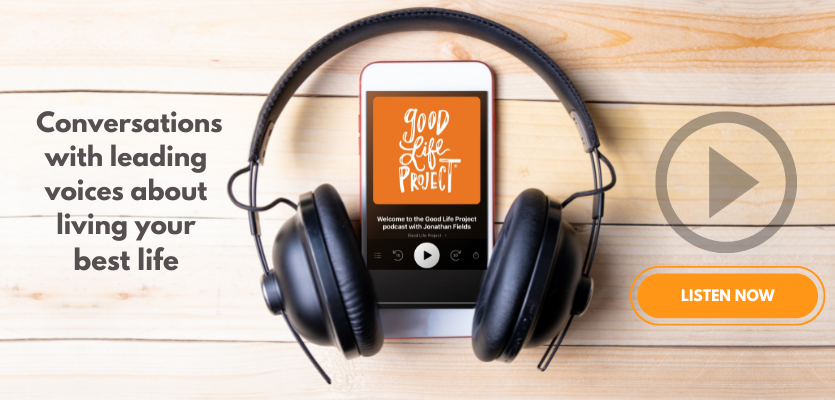We all know the feeling of having someone cross our boundaries — the mix of anger and surprise, and then the inevitable decision: do you call them on it, or just let it go? This kind of experience is both common and unpleasant, and the bad news is, it’s going to be a factor throughout your whole life. Having good boundaries is an integral part of living a good life, and you’re going to be called on to manage your boundaries as long as you’re interacting with other humans.
The good news is, it’s absolutely possible to set and enforce boundaries so that these kinds of situations become less common. And the best news is that you can learn how to set and enforce boundaries without feeling bad.
Let’s get into it:
Here’s everything you need to know about setting and respecting boundaries
Let’s start out by defining what boundaries are. Relationship expert and GLP podcast guest Nedra Glover Tawwab defines them like this:
“Boundaries are your needs, your expectations, things that will keep you safe and sane in your relationship with yourself and others. There are some pretty clear boundaries –– for instance, laws are boundaries. And there are some that are just for us and very unique.”
There are lots of different types of boundaries in relationships and with yourself. Some of them you may already be familiar with, like physical boundaries — you know whether you’re OK with someone hugging you or not, for instance — while others might be new
Physical boundaries: the ways in which you allow other people to be physically close to you or touch you.
Sexual boundaries: the kinds of sexual touch or interactions you allow.
Emotional boundaries: what kinds of emotional interactions you’re willing to have with people. For instance, you might not be available for long, emotionally-draining conversations.
Relationship boundaries: what behaviors and agreements you expect others to hold in relationship with you.
Intellectual boundaries: the ways in which you’re willing to interact with someone’s ideas and way of seeing the world.
Time boundaries: the ways you’re willing to use your time.
Financial boundaries: what you’re willing to accept from financial institutions, and the boundaries you put in place with yourself about what you’re willing to spend money on.
Device boundaries: the times, places, and ways you interact with your phone, tablet, or TV.
There are (of course) so many more types of boundaries than this — and as you’re working on creating your own boundaries, it’s worth considering which areas you feel strong in, and which could use some shoring up.
Why we let people cross boundaries … and the hidden consequences of doing so
Even though boundaries are critical for living a good life, it can still be tempting to let it slide when someone crosses yours. There’s a couple of reasons for this — with one of the main ones being that we think that enforcing a boundary will lead to conflict, and conflict is uncomfortable. Nedra Glover Tawwab describes it,
“I think so many of us are not comfortable with the notion that, “Oh, if I do this, this will lead to conflict and I don’t want to have to deal with conflicts. I’ll just back away from it.” Rather than just being clear and standing with that.”
Enforcing boundaries can also be hard if you have a “boundary blueprint” that says boundaries are bad, and that enforcing them is being pushy or unkind. The “boundary blueprint” is a term from psychotherapist and GLP podcast guest Terri Cole for this internal map we form when we’re growing up based on the ways that people around us act.
Sometimes elements in this form from explicit lessons about boundaries — things like, “Be a good girl,” or “Don’t make a fuss” — while other times it’s boundaries we develop to protect ourselves from feelings of unworthiness, danger, or a lack of belonging. While this blueprint can become so entrenched that your boundary-related behaviors feel automatic, it’s absolutely possible to rework your boundary blueprint with awareness and practice.
And while that may sound like a lot of work just to get into situations that might lead you into conflict, there are always consequences to whatever choice you make with your boundaries. If you enforce them, you might experience conflict. It might be uncomfortable, or even scary. People are probably going to get upset at one point or another. But if you don’t enforce your boundaries, you’re imposing consequences on yourself.
How to set boundaries
Say them out loud.
Once you’ve got a handle on what your boundaries are, it’s time to do the hard part: saying them out loud. This is important, because it keeps you from feeling resentful, and it keeps other people from accidentally crossing your boundaries.
“With assumptions come silent agreements. That is why I say set your boundaries early and often. If you don’t talk about something at the beginning of a relationship, it’s almost like colluding with the other person’s behavior. When you let things that bother you slide, you are silently agreeing that it’s OK. What we want are clean agreements, meaning, we can communicate effectively to manage each other’s expectations.” (Terri Cole)
What do you say? Really anything that gets the message across. Nedra Glover Tawwab recommends a formula of “This is my boundary, and here’s why it’s important to me,” while Terri Cole’s book, Boundary Boss, has a whole list of sentences to start conversations about boundaries:
“I’d like to make a simple request.”
“I want to bring something to your attention.”
“I want to revisit what happened yesterday.”
“Thanks for thinking of me, I’ll get back to you.”
Recognize your role
This is how you avoid that ugly feeling of guilt that can come up with enforcing a boundary. The truth is, sometimes people are just going to be upset with you. They won’t understand your boundary, and they’ll be unhappy that they’re not getting what you want. How they feel and how they manage those feelings is out of your lane.
“We want to persuade people about our boundaries. We want them to be OK with us saying no, be OK with us being in disagreement, or different. And unfortunately, people won’t always get that. You can say the boundary with a smile. You can dress it up, you can do whatever you want to do. But things that you will say that will unintentionally hurt other people. Sometimes no can be the worst thing that someone can hear … So the biggest challenge that I see is this approval-seeking with our boundaries. ‘If people don’t agree with my boundary. Should I even have the boundary?’ The answer is probably yes. Yes.” (Nedra Glover Tawwab)
This doesn’t mean that you become cold and uncaring, it’s not about doing whatever you want and telling everybody else to take a hike. It’s about recognizing that you have no control over how other people feel, and that their feelings do not determine the OK-ness of you or your boundary.
Decide whether this boundary is something you can be flexible with.
A lot of times people think about boundaries as being absolute, and sometimes they are. If you’re setting boundaries with a narcissist, for example, the big “NO!” boundary might make sense. Similarly, in setting boundaries with a child who’s well being depends on you, you might have a firm boundary: no you may not cross the road during rush hour by yourself. In other situations, like setting boundaries with adult children, or with friends, you might have a little more flexibility. You might be OK with a certain boundary bending in specific situations, or with certain people.
“Creating and maintaining healthy boundaries is a lifelong skill, and as we and our relationships evolve, as we mature and get to know ourselves better, our boundaries will become more nuanced. When we commit to expressing our boundaries clearly and fully, we set ourselves and our relationships up for success.” (Terri Cole)
Try to get clear on which boundaries you’re OK bending and which are your hard no’s — this will make it easier to enforce each type, since you won’t be trying to make that determination in the moment. It’ll also help you feel better about your boundaries, since you’ll be enforcing them in ways that are in alignment with your integrity.
Practice, practice, practice
Just like with anything else that touches so many areas of your life, boundaries take practice. Go into this process with a growth mindset, and realize that you’re going to get it wrong sometimes, and that’s OK. Even if you fail to enforce a boundary one time, you can always go back and correct it, or make a different choice the next time.
Let’s recap:
— You’re never going to be free from managing your boundaries, because they are essential for living a good life. But you can learn to create boundaries in ways that minimize unpleasant interactions, and even better, you can learn to enforce them without feeling bad.
— Boundaries are your needs, expectations, and the things that keep you safe. There’s lots of different kinds of boundaries, including physical boundaries, sexual boundaries, emotional boundaries, intellectual boundaries, time boundaries, financial boundaries, and device boundaries among others.
— It’s tempting to let it slide when people cross our boundaries, because we often have a faulty “boundary blueprint”, and conflict can be uncomfortable. But there are consequences to doing this. What’s happening there is that you’re choosing to impose consequences on yourself instead of on the other.
— There’s lots of ways to set boundaries. One easy template to work with is, “This is my boundary, and here’s why it’s important to me.” You can also say, “I’d like to bring something to your attention…” or a simple, “No thanks.”
— Above all … practice, practice, practice. Setting and holding boundaries is a life-long practice, and you’re not going to get it right all the time.
Whether you’re setting boundaries with family, navigating coparenting boundaries, or dealing with tricky situations like grandparents overstepping boundaries, we’re here to help. Join us for subject deep-dives in the GLP Newsletter family to get the latest research-backed articles on how to live a good life. We craft each email with an intention to connect, and truly enjoy getting to know each and every one of you. Join us here.




